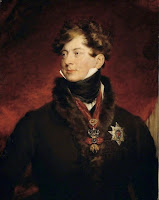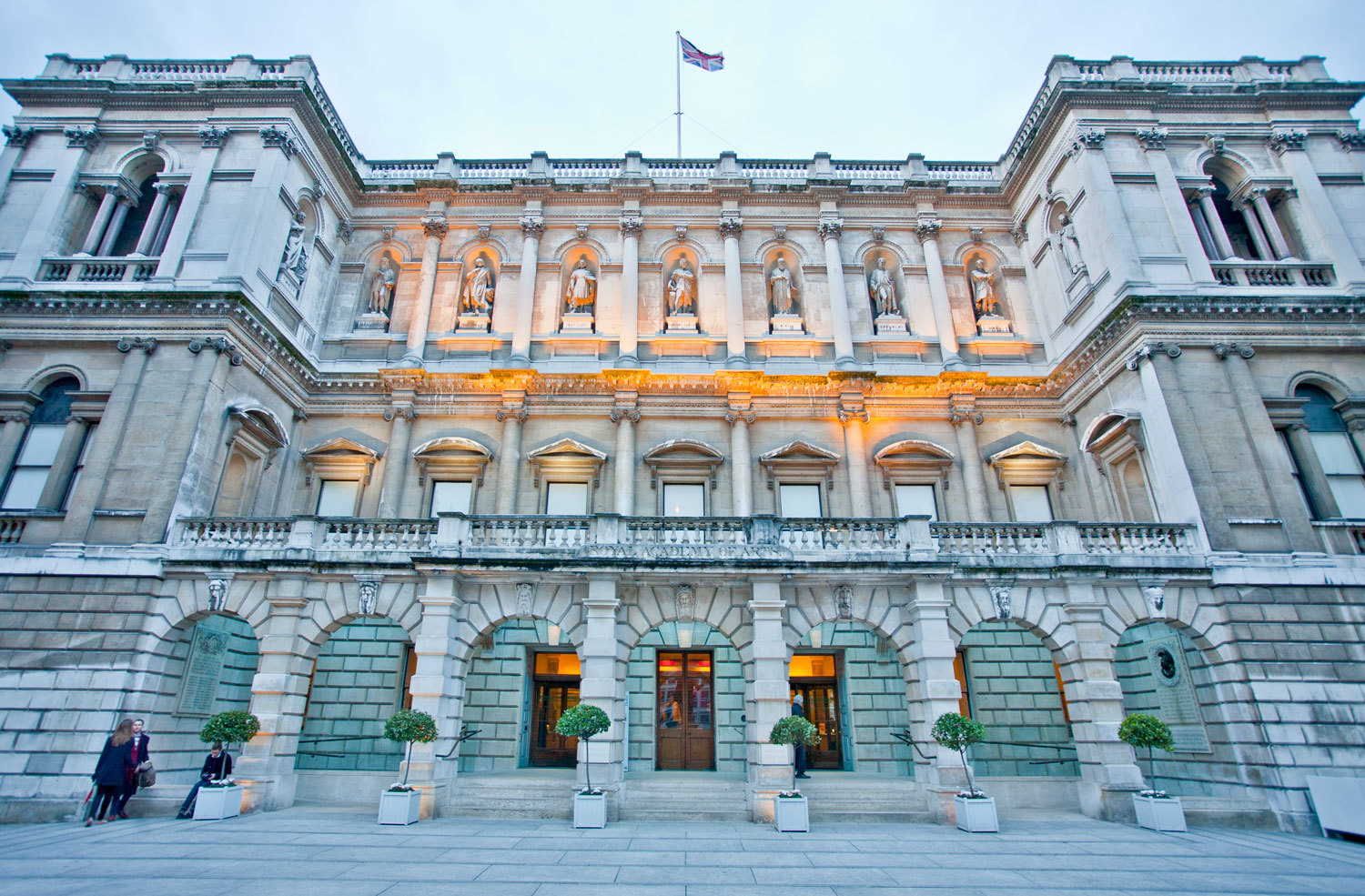Brighton on the English Channel is best known for its connection to King George IV when he was Prince Regent for 1811-1820, during the madness of his father, George III. A notorious wastrel whose wantonness in matters pecuniary and amorous made him despised by his subjects, he is nevertheless remembered by his glorious legacy in material matters, the foremost being the Royal Pavilion, his nonpareil oriental fantasy of a palace.
In the Pavilion's lovely public gardens sits the Brighton Museum and Art Gallery. Though it is a Victorian institution, it is architecturally fitting to its unique, Regency surroundings. Inside, its collection and curation make it an exemplar of a civic museum and art collection, presenting shows for connoisseurs and the simply curious; for visitors with skateboards or walkers; for visitors interested in the deep details of regional history and archaeology, or in the current trends in the city's big and brilliant LGBT community. It balances permanent and temporary shows beautifully; it always feels lively.
The greatest permanent exhibit is of Mr. Henry Willett's popular pottery, part of which collection he lent to the new museum in 1873, and all of which was finally donated. Willett believed that in everyday pottery—the sort that common people dined with, that commemorated the great deeds of the day, or that made houses pretty—one could find the history of the Great Britain. His collection certainly makes a convincing case in its amplitude and organization. Willett subdivided it into categories such as Pastimes and Amusements, Military Heroes, Royalty and Loyalty, Crime, Sport, and England and America.
I was touched by this figurine of Queen Victoria nestling one of her children in the section on British Royalty. It is biscuit porcelain, that is, unglazed porcelain, giving it a natural glow and translucency that highlight the maternal and spiritual aspects of the tableau. The detail of the ruffles at her collar and and on the baby's gown are exquisitely rendered. The sculptor and every craftsman working along the protracted manufacturing route has given his all to this piece. The production of figurines proceeds from drawing to clay modelling, thence to casting in molds that are subsequently refined. The molds are split into sections to assure that every detail is perfect before the clay pieces are formed, dried, and assembled into one. The molds are destroyed after a small series of perfect figurines are cast.
Victoria was the niece of George IV, and ascended the throne in 1837, seven years after his death, immediately succeeding her father, George's uncle, William IV. That family cohabits the shelves of Willett's Royalty collection. Here George IV is represented in two aspects. In his blue coat, he appears as if he is the amiable uncle who sneaks you a nip at the Christmas gathering. But on a flowery transferware jug, he gazes into the distance, beyond his suffering wife, Queen Caroline, so hated, betray, and scorned (she was banned from his coronation) that her dour aspect on the lustreware pitcher can be overlooked.
In these pieces we see two more pottery techniques that are common in the Willett's collection. In the late eighteenth- and nineteenth-century, pearlware and transferware were popular. Pearlware is brightly colored pottery painted in several colors before its final glaze and firing. Only certain pigments can be used in this undercoat because the lead glaze required firing at an extremely high temperature. Pearlware is easy to spot for its liveliness and brilliant surface. Transferware is "printed" pottery. The etching plate from which a picture or words were printed is inked and printed onto special paper, and the image is eventually transferred onto the plate or pot to be further decorated and glazed. The images on the pitchers with George and Caroline can be traced back to popular images of the day copied originally from oil paintings.
Away from Royalty, which is only a small section of a vast collection, there are so many more gems invoking a rainbow of responses. This is, of course, why Henry Willett was collecting, to capture the whole of British history and experience, from the Kings and Queens to the quack doctors. I enjoyed some direct, hand-painted scenes on plates, like the illustrated definition of a lawsuit and the simple homage to a naval hero.
I also enjoyed as a child would the many domestic and landscape scenes, so colorful, imaginative, and droll. Odd scales, bits of folklore added into historical or daily scenes, anachronism, the grand and the quotidian all mixed together in single pieces—and what's more, several pieces shelved together in a sparkling world of generous make-believe! Imagining the craft that went into the making of these whimsical and happy works lifts my heart.
Fortunately, the Willett collection has not been allowed to remain closed or static. The Brighton Museum continues to collect pottery that is inspired by the collection or that reflects the founder's interests in the many popular uses of pottery function and designs. Among the contemporary acquisitions on display when I visited in November, 2019 was an immense piece filled to the brim with personal and historical reference. The note told us that it's an homage to the artist Carole Windham's departed dog, Bud. But it also references Staffordshire dogs so often seen in Regency ceramics (see the pugs in the photo above). The tree against which Bud leans is bocage—what supports the entertainers with dancing dogs, and the Grecian daughter. Here, Windham cleverly turns the greenery into doggery, executing the leaves as dog faces to produce "Barkage." I don't know the exact dimensions, but this piece is at least two feet tall, quite an imposing work. With the sturdy, big dog's sorrowful pose and the multitude of up-tilted faces of the crowded "barkage," the piece packs a comic wallop while it delivers considerable subtle feeling too. Windham is definitely working in the right medium. The dog is solid and soft and asks to be touched again, but he also appears to be melting in that softness. But the same medium allows the detail of the many tiny uplifted faces—the angels, or the spirits of Bud—leaning into the act of rising.
The Willett pottery collection is a joy. For me, it was unalloyed fun, in and of itself: It bred curiosity at every turn. For anyone with an interest in social history, British history of the eighteenth or nineteenth century, and for any of Willett's wide-ranging subjects, there is something to surprise and inform here. This is not to mention its importance for collectors and enthusiasts of pottery, for which it is undoubtedly a Destination.
____________________________________________________________
If you are interested in reading more about the Willett's Popular Pottery or some of the techniques commonly used in the objects, you may be interested in these articles, or in Stella Beddoe's book, A Potted History: Henry Willett’s Ceramic Chronicle of Britain, 2015.
https://museumcrush.org/a-
http://www.madehow.com/Volume-5/Bisque-Porcelain-Figurine.html
http://www.thepotteries.org/features/pearlware.htm
https://www.
In July 2012, I wrote about the Ohio Craft Museum's show, "Pots with a Purpose," a curated show of contemporary American functional pottery.
 |
| Detail of the Royal Pavilion, John Nash architect. Built 1815-1823. Author photo. |
 |
| Brighton Museum and Art Gallery. |
 |
| Portrait of Queen Victoria and one of her children. Modelled for Minton of Staffordshire by George Cocker. Biscuit porcelain, ca. 1841. Author photo. Brighton Museum and Art Gallery. |
 |
| Portrait of George IV wearing star of the Order of the Garter. Enameled pearlware, 1820. Author photo.Brighton Museum and Art Gallery. |
 |
| Creamware printed after a design by Tim Bobbin, "The Lancashire Hogarth,"depicting a crude dental extraction. Ca. 1790. Author photo. Brighton Museum and Art Gallery. |
 |
| George IV by Thomas Lawrence (1769-1830). Reverse of image on jug. |
 |
| Willett's Popular Pottery, Brighton Museum and Art Gallery. Author photo. |
 |
| Earthenware, possibly Northeast England. ca. 1830. Author photo. Brighton Museum and Art Gallery. |
I also enjoyed as a child would the many domestic and landscape scenes, so colorful, imaginative, and droll. Odd scales, bits of folklore added into historical or daily scenes, anachronism, the grand and the quotidian all mixed together in single pieces—and what's more, several pieces shelved together in a sparkling world of generous make-believe! Imagining the craft that went into the making of these whimsical and happy works lifts my heart.
 |
| Group, Bud, and Barkage, 2000. Carole Windham. Handbuilt in earthstone clay, colored slips, glazes, and enamel. Author photo. Brighton Museum and Art Gallery. |
The Willett pottery collection is a joy. For me, it was unalloyed fun, in and of itself: It bred curiosity at every turn. For anyone with an interest in social history, British history of the eighteenth or nineteenth century, and for any of Willett's wide-ranging subjects, there is something to surprise and inform here. This is not to mention its importance for collectors and enthusiasts of pottery, for which it is undoubtedly a Destination.
____________________________________________________________
https://museumcrush.org/a-
http://www.madehow.com/Volume-5/Bisque-Porcelain-Figurine.html
http://www.thepotteries.org/features/pearlware.htm
https://www.
In July 2012, I wrote about the Ohio Craft Museum's show, "Pots with a Purpose," a curated show of contemporary American functional pottery.






No comments:
Post a Comment